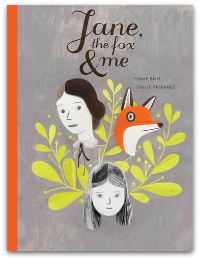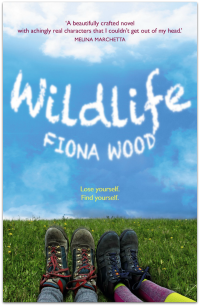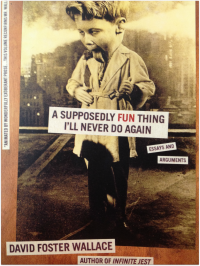Each week we bring you a sample of the books we’re reading, the films we’re watching, the television shows we’re hooked on or the music we’re loving.
Emily is reading Jane, the Fox & Me
It’s more than my job’s worth to mention names but I can reveal that this week in a post-election malaise, some of our most highly respected booksellers have been watching
The Bachelor
.
As you may imagine, this has resulted in some searching questions over coffee here on Lygon Street. (‘What do you think Tim reads?’) For some it has become a kind of endurance test: ‘I watched ten minutes but then I had to switch off. I might try again next week.’ It’s truly dreadful, and dreadfully compulsive.
Very much higher-of-brow is my pet book this week: a graphic novel called Jane, the Fox & Me, which will be published in the next couple of weeks. Set in Quebec, it has been sympathetically translated from the original French and I love the tone this lends.
A young girl, Hélène, has been singled out for bullying by a group of catty girls at school who write things about her on the toilet walls. She dreads going on school camp and the only comfort she can find is in the pages of the book she’s reading, Jane Eyre. The appearance of a beautiful red fox signals a change in her life, and there is a lovely message of hope at the end of a distressing insight into the life of an isolated child. Everything from the colours to the artwork style to Hélène’s idiosyncratic voice is perfect. It’s a beautiful book.
Nina is reading Wildlife by Fiona Wood
I’m on a bit of a YA binge at the moment. Last week I raved about Rainbow Rowell’s
, and this week I’ve moved onto an Aussie YA novel I’ve been meaning to read since we featured it in the
Readings Monthly
earlier this year.
Wildlife captures everything that is wonderful not just about young adult books, but about Australian YA in particular. Wildlife brings me back to the feeling I had when I was a teenager reading John Marsden’s So Much to Tell You or Melina Marchetta’s Looking for Alibrandi for the first time. Fiona Wood’s ability to create an authentic voice for a teenage girl is astounding. Not just that, but she deals with teenage sexuality with more honesty, humour and realism than most authors I have read (YA or adult).
Her exploration of the complicated friendship between main character Sibylla and her best friend Holly is the standout element of the novel so far (I’m two-thirds of the way through). Every chapter leaves me thinking ‘Fiona Wood really gets what it is like to be a teenage girl’.
I’ve completely fallen in love with this book and I can’t wait to finish it this weekend.
Bronte is reading David Foster Wallace
I know I’m late to join the party but at the moment I can’t seem to get enough of David Foster Wallace. He writes with a kind of haphazard inventiveness and a careless, fierce intelligence. He’s funny and smart which is one of my favourite two mixes in a writer. (The other is to be deceptively mundane and secretly heart-breaking, much in the manner of Kazuo Ishiguro.)
I’m currently reading A Supposedly Fun Thing I’ll Never Do Again and am completely, happily stuck in his essay, ‘David Lynch Keeps His Head’. It’s terrific reading and not just because I’m a Lynch fan. I love the way we get a sense of Foster Wallace’s process, of his thoughts. It feels so personal.
For example:
“D. Lynch is an exponentially better film-maker than Q. Tarantino. For, unlike Tarantino, D. Lynch knows that an act of violence in an American film has, through repetition and desensitization, lost the ability to refer to anything but itself. This is why violence in Lynch’s films, grotesque and coldly stylised and symbolically heavy as it may be, is qualitatively different from Hollywood’s or even anti-Hollywood’s hip cartoon violence. Lynch’s violence always tries to mean something.
a better way to put what i just tried to say:
Quentin Tarantino is interested in watching somebody’s ear getting cut off; David Lynch is interested in the ear.”





